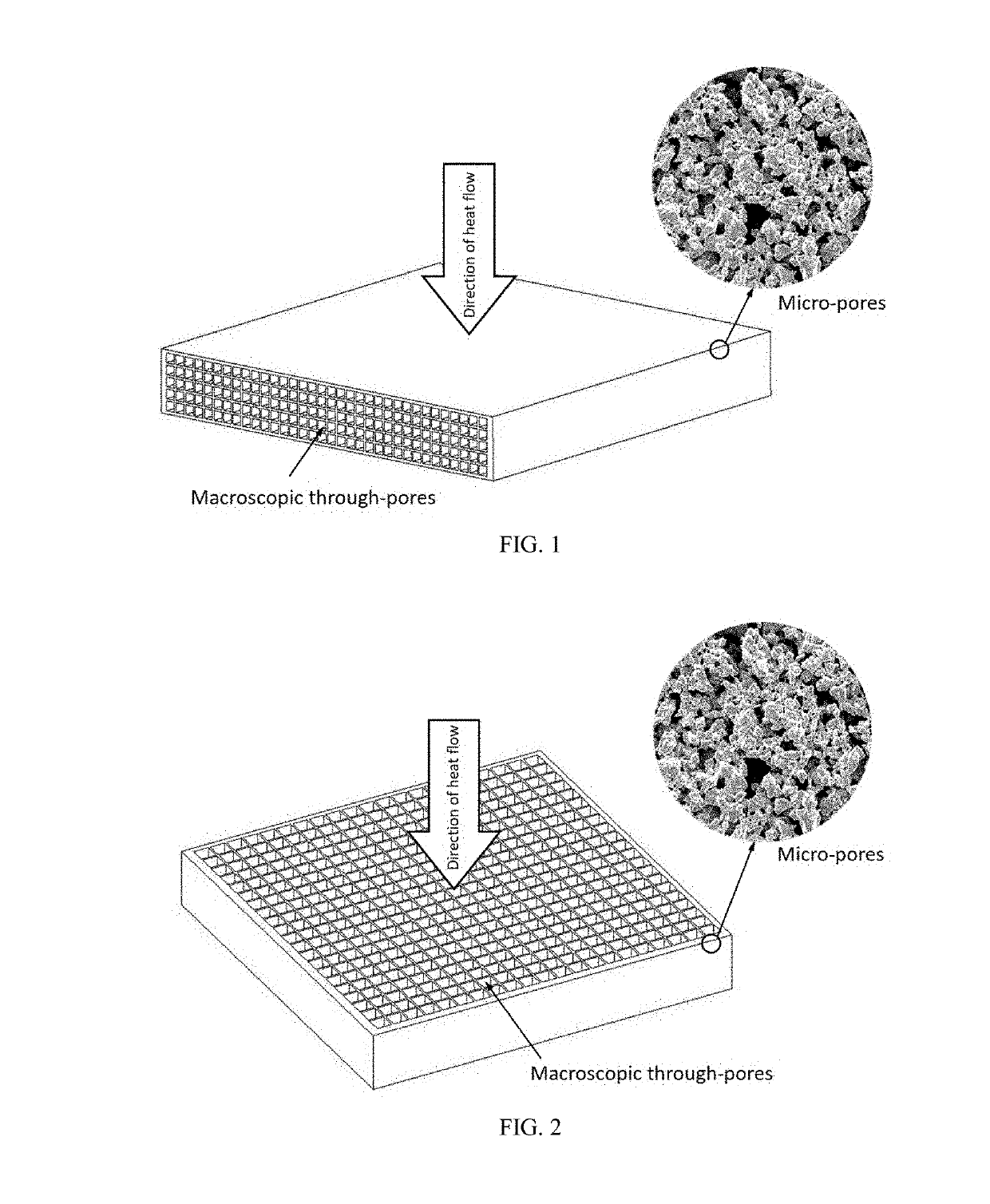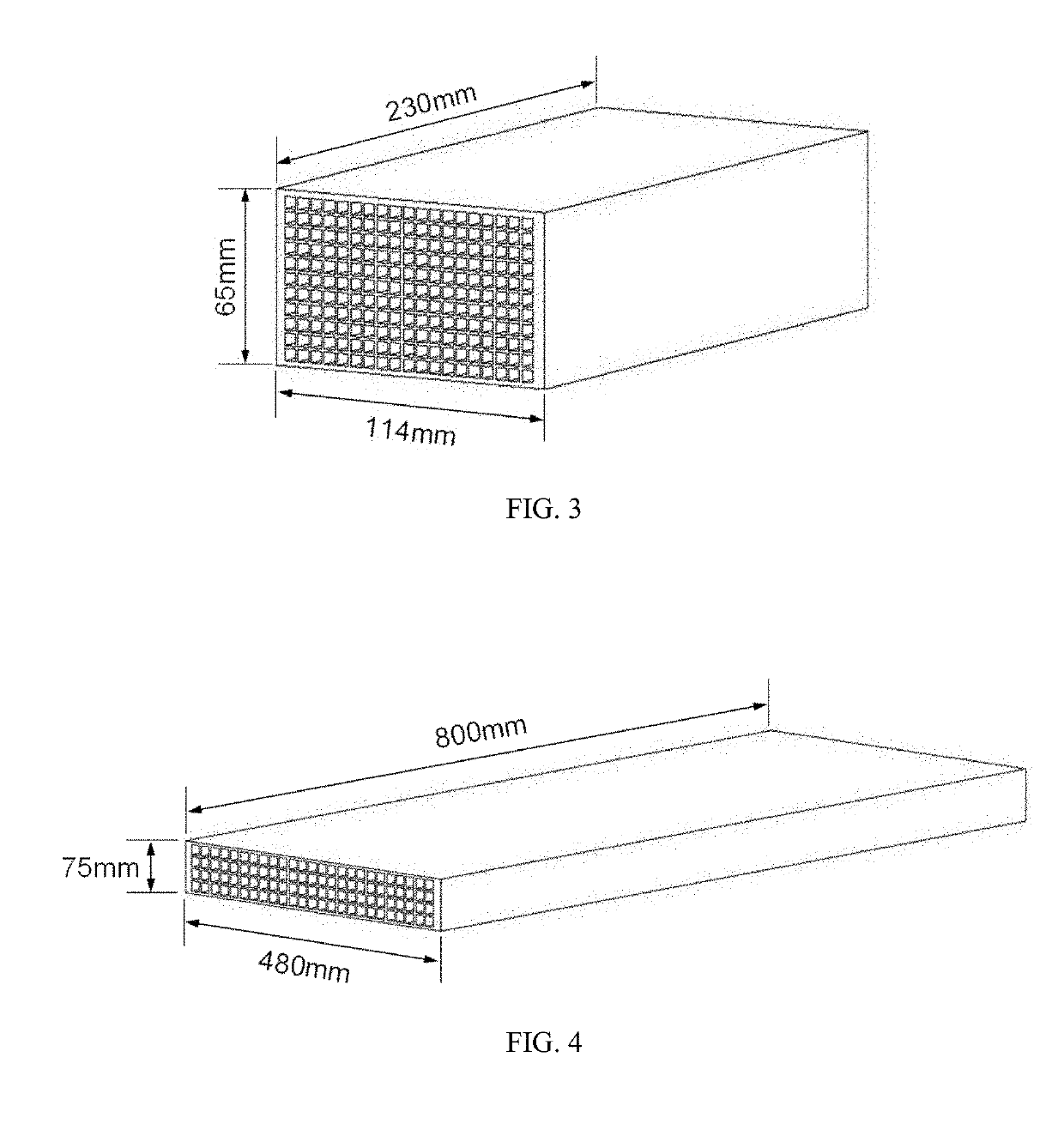High-temperature Resistant Lightweight Thermal Insulation Material with Dual-pore Structure and Preparation Method Thereof
a lightweight thermal insulation material and dual-pore technology, applied in ceramic extrusion dies, domestic applications, ceramicware, etc., can solve the problems of large heat storage and dissipation loss, deformation of the furnace wall, collapse or fracture of the furnace roof, etc., to improve the strength and high temperature creep resistance of the material, reduce the thermal conductivity of the material, and the effect of rapid and easy production
- Summary
- Abstract
- Description
- Claims
- Application Information
AI Technical Summary
Benefits of technology
Problems solved by technology
Method used
Image
Examples
example 1
[0032]In this example, the mass ratio of alumina, silica, electric melting mullite, andalusite, and Suzhou clay powders (as raw material) was 54:2:30:10:4. The mass ratio of the raw materials to the activated carbon pore former was 100:1.5. The Al / Si ratio in the raw materials in this example was 6.0:1, and the performance of the sample is listed in Table 1. The sample has a volumetric weight of 1.10, a flexural strength of 12 MPa, a thermal conductivity of 0.85 W / m·K (perpendicular to the through-pores) and 2.00 W / m·K (parallel to the through-pores), a volumetric heat capacity of 59 kJ / K·m3, a creep index of 1.65, and a thermal shock resistance index of 65. In this example, a standard brick mold was used for extrusion molding, and a blank having a width×thickness=137 mm×78 mm was extruded and cut into a standard brick Green body having a length of 277 mm, and a standard brick sample having a length×width×thickness=230 mm×114 mm×65 mm was obtained after sintering, as shown in FIG. 3...
example 2
[0033]In this example, the mass ratio of alumina, silica, electric melting mullite, andalusite, and Suzhou clay (as raw material powders) was 42:2:30:20:6. The mass ratio of the total raw materials to the activated carbon pore former was 100:1.5. The Al / Si ratio in the raw materials in this example was 4.2:1, and the performance of the sample is listed in Table 1. The sample has a volumetric weight of 0.95, a flexural strength of 9.8 MPa, a thermal conductivity of 0.78 W / m·K (perpendicular to the through-pores) and 1.88 W / m·K (parallel to the through-pores), a volumetric heat capacity of 52 kJ / K·m3, a creep index of 2.64, and a thermal shock resistance index of 70. In this example, a flat mold was used for extrusion molding, and a blank having a width×thickness=578 mm×90 mm was extruded and cut into a flat Green body having a length of 963 mm, and a flat sample having a length×width×thickness=800 mm×480 mm×75 mm was obtained after sintering, as shown in FIG. 4.
example 3
[0034]In this example, the mass ratio of including alumina, silica, electric melting mullite, kyanite, and Suzhou clay powders (as raw material powders) was 66:2:30:20:2. The mass ratio of the raw materials to the activated carbon pore former is 100:1.5. In this example, mullite and andalusite were replaced by kyanite as the main source of silica, and the amount of alumina used was more than that of Examples 1 and 2, the Al / Si ratio in the raw materials was 6.8:1. The performance of the sample is listed in Table 1.
PUM
| Property | Measurement | Unit |
|---|---|---|
| Temperature | aaaaa | aaaaa |
| Temperature | aaaaa | aaaaa |
| Temperature | aaaaa | aaaaa |
Abstract
Description
Claims
Application Information
 Login to View More
Login to View More - R&D
- Intellectual Property
- Life Sciences
- Materials
- Tech Scout
- Unparalleled Data Quality
- Higher Quality Content
- 60% Fewer Hallucinations
Browse by: Latest US Patents, China's latest patents, Technical Efficacy Thesaurus, Application Domain, Technology Topic, Popular Technical Reports.
© 2025 PatSnap. All rights reserved.Legal|Privacy policy|Modern Slavery Act Transparency Statement|Sitemap|About US| Contact US: help@patsnap.com


